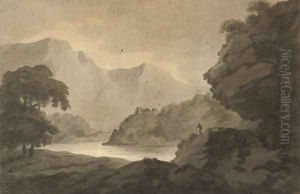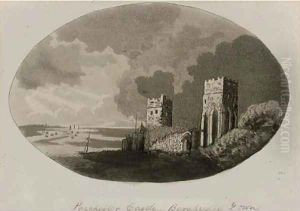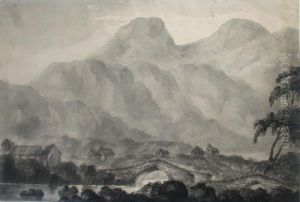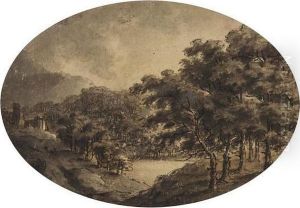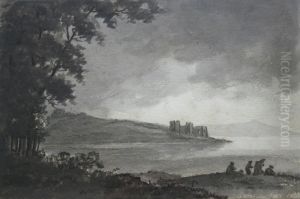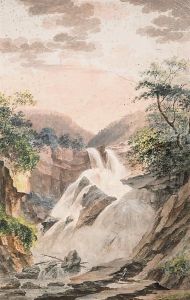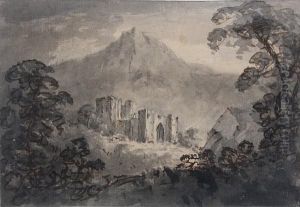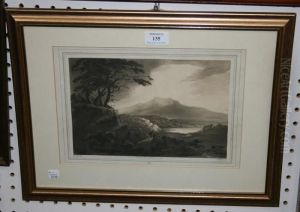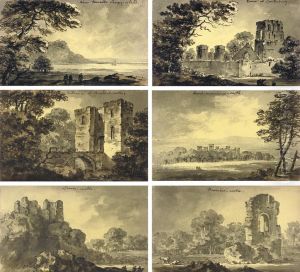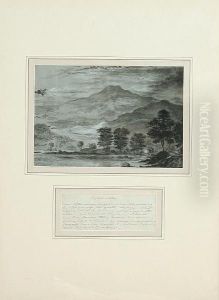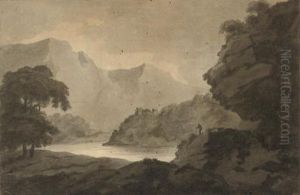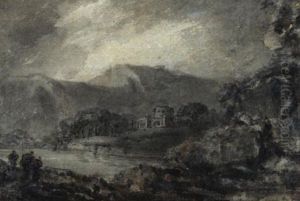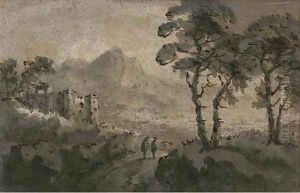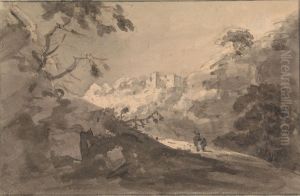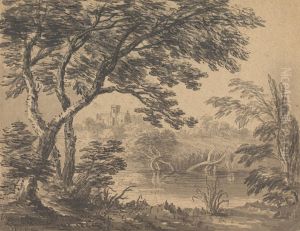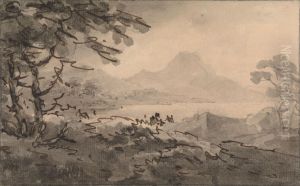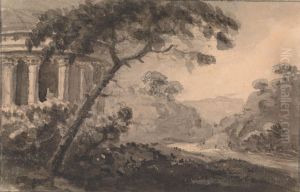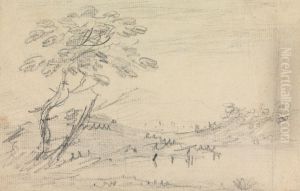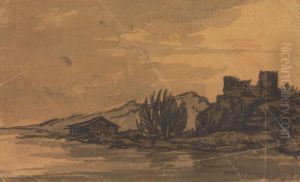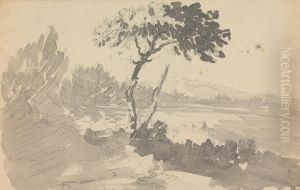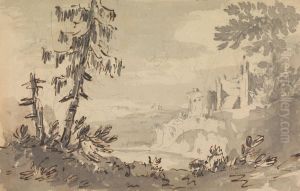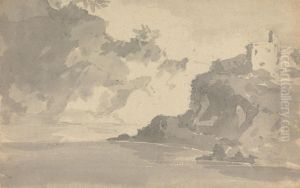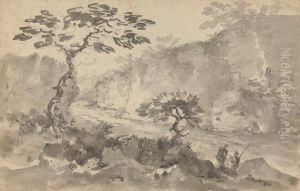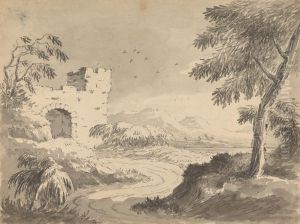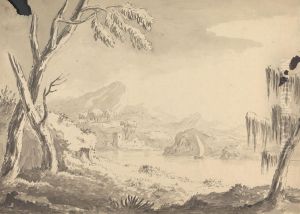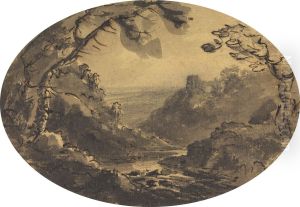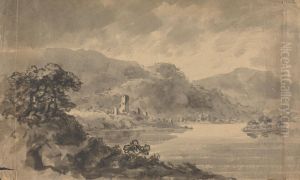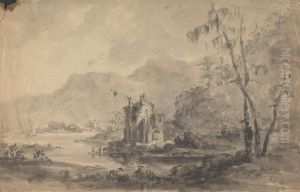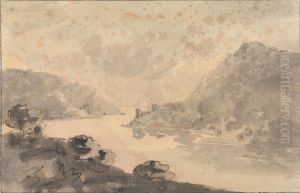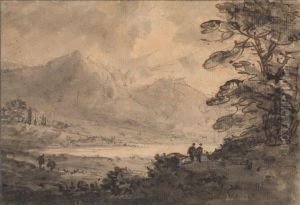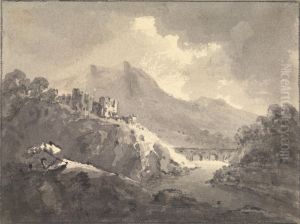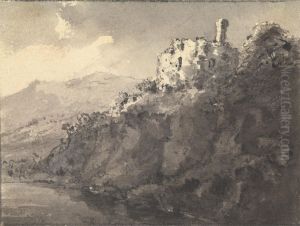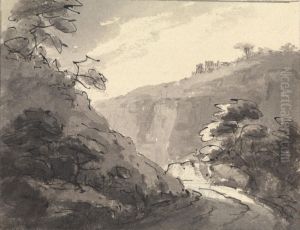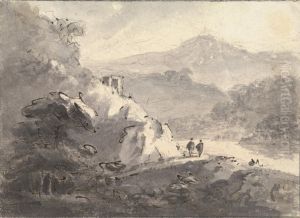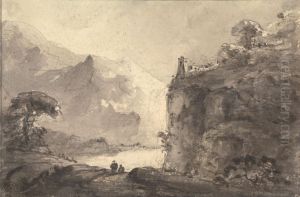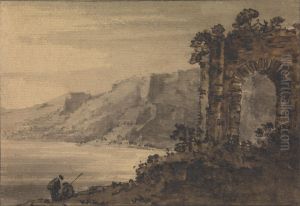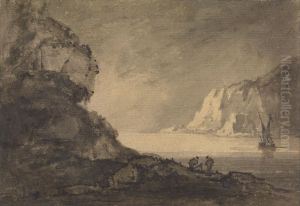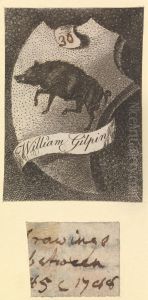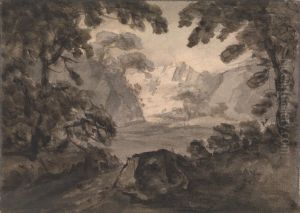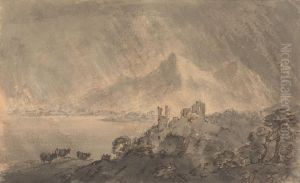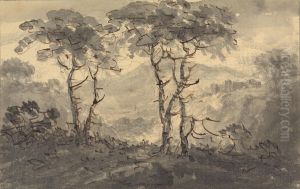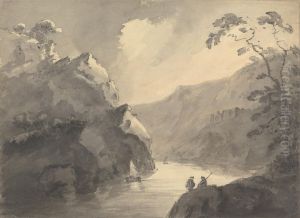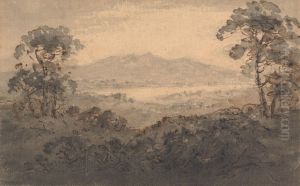William Gilpin Paintings
William Gilpin was a British artist, clergyman, schoolmaster, and author, best known for his works on the picturesque. Born on June 4, 1724, in Cumberland, Gilpin was a pivotal figure in the transition from the classical to the romantic era in art and landscape appreciation. Educated at Queen's College, Oxford, he was ordained in the Church of England in 1748. Gilpin's career as a clergyman included various positions, culminating in his appointment as Vicar of Boldre in the New Forest, Hampshire, in 1777, a position he held until his death.
Gilpin's interest in landscape art and theory led him to develop the concept of the 'picturesque,' an aesthetic ideal that sought to capture the beauty found in natural landscapes that were characterized by roughness and irregularity, as opposed to the smooth and orderly landscapes favored in classical landscape design. This concept played a crucial role in shaping the romantic era's approach to landscape art and garden design.
Throughout his life, Gilpin traveled extensively across Britain, sketching landscapes and later publishing them as part of illustrated tour guides. These guides were among the first to suggest that aesthetic pleasure could be derived from landscapes and ruins, which helped to popularize tourism in the British countryside. His most influential works include 'Observations on the River Wye' (1782), which is considered one of the earliest examples of the picturesque travel guide, and 'Essay on Prints' (1768), where he defined the picturesque as 'that kind of beauty which is agreeable in a picture.'
Despite his contributions to art and aesthetics, Gilpin's own drawings often lacked the technical skill to match his theoretical insights. Nevertheless, his ideas on the picturesque significantly influenced subsequent generations of artists, writers, and landscape gardeners, including the likes of William Wordsworth and Lancelot 'Capability' Brown.
William Gilpin passed away on April 5, 1804, in Boldre. His legacy, however, endures through his profound influence on the romantic movement and the permanent alteration in the way landscapes were perceived and depicted in British art and culture.
